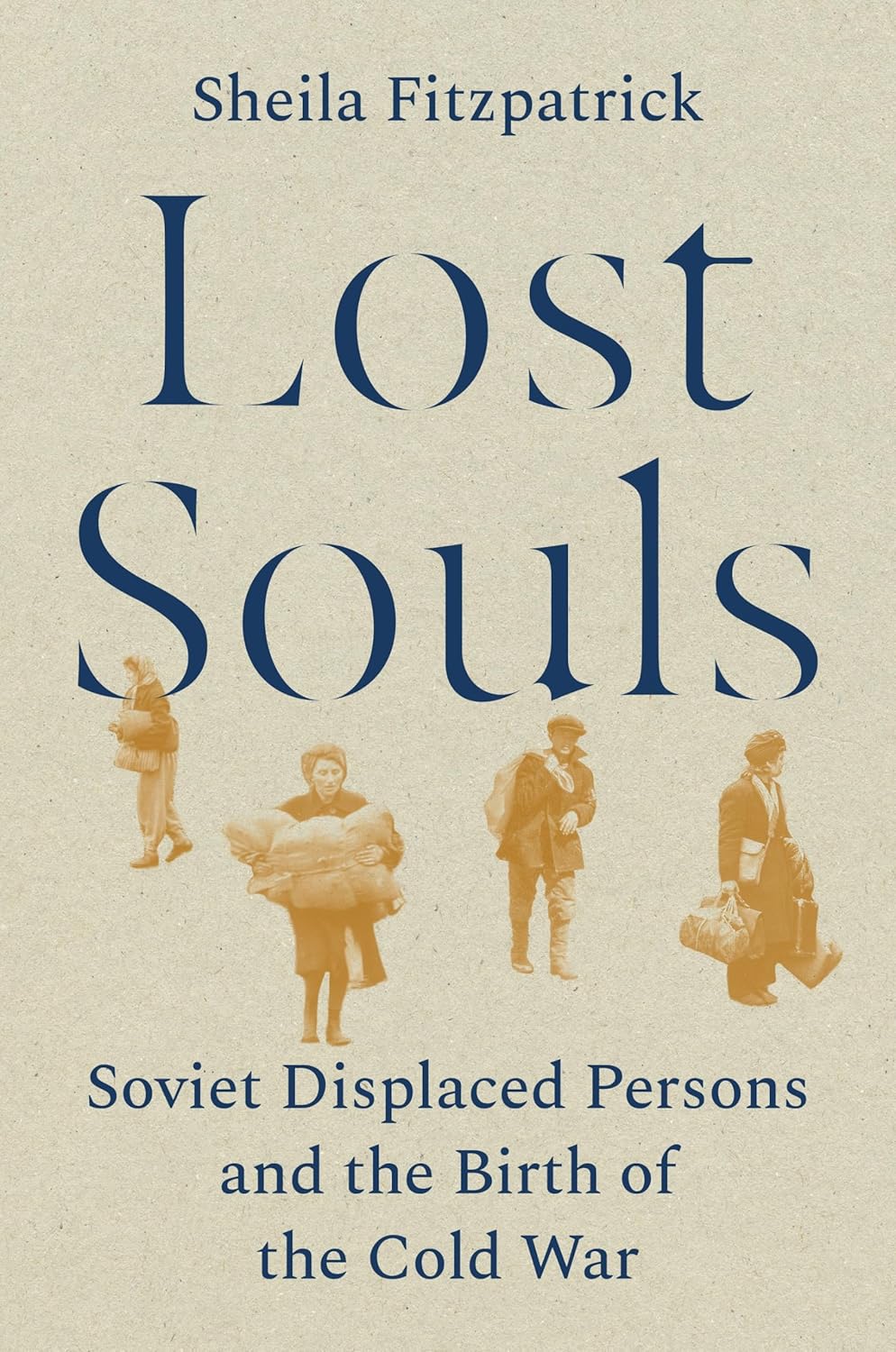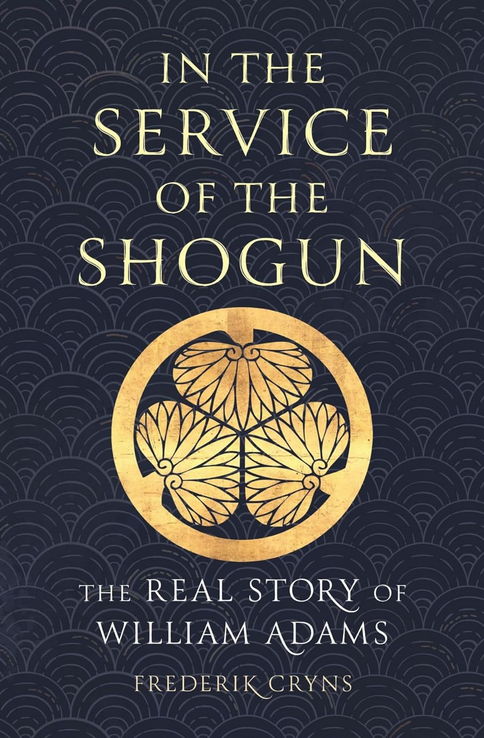Lost Souls: Soviet Displaced Persons and the Birth of the Cold War
- By Sheila Fitzpatrick
- Princeton University Press
- 352 pp.
- Reviewed by Andrew M. Mayer
- January 10, 2025
What became of the Russians who refused to return “home” after WWII?

In Lost Souls: Soviet Displaced Persons and the Birth of the Cold War, Sheila Fitzpatrick, a professor of history at Australian Catholic University and Distinguished Service Professor Emerita at the University of Chicago, offers a monumental history of a not-often-discussed chapter from World War II. She focuses on 1945-1952, shining a light on how difficulties among wartime allies Great Britain, the United States, and the Soviet Union were exacerbated by their inability to solve pernicious immigration-emigration issues after the war.
“The Allies had thought in advance about the mess that would be left at the end of the war,” writes Fitzpatrick. “In 1943, they set up UNRRA [the United Nations Relief and Rehabilitation Administration] with a mandate to relieve suffering, prevent pestilence, help restore essential services, and ‘return prisoners and exiles to their homes.’”
UNRRA attempted to solve the postwar refugee problem by controlling displaced-persons camps in the four zones — one each administered by the U.S., U.K., France, and the Soviet Union — set up in Germany and Austria following Germany’s surrender. The newly formed International Refugee Organization (IRO) took over from UNRRA in 1946. (It would be disbanded in 1952 and replaced by the nascent Office of the United Nations High Commissioner for Refugees, or UNHCR, which still exists.)
It’s critical to understand the events of these years to grasp the enormous range of humanitarian and geopolitical issues involved in bringing order to the chaos of the toppled Third Reich. At war’s end, the Soviet Union basically remained in any areas — including parts of Ukraine, Poland, the Baltics, Hungary, Czechoslovakia, Bulgaria, and Romania, among others — it had taken over from the retreating Wehrmacht. Despite the promises of cooperation he made to Harry S. Truman and Winston Churchill at the Potsdam Conference just weeks before the war’s conclusion, Joseph Stalin had no intention of relinquishing his spoils.
“The deterioration of Soviet relations with its erstwhile allies after the war,” explains Fitzpatrick, “was exacerbated by the fact that Stalin and other Soviet leaders, mourning Roosevelt’s loss, thought Truman was a nonentity and loathed Ernest Bevin, the British foreign secretary, with a passion.”
Churchill would be proven correct when, in 1946, he remarked that an “iron curtain” was descending over Europe. The Soviets’ provocative Berlin Blockade of 1948-49 left no doubt that the era of cooperation, if it ever existed, was finished. By 1949, the year NATO was born, the Western Allies had established the Federal Republic of West Germany, while the Soviet Union, acting alone, formed the German Democratic Republic (aka East Germany). All the while, millions of displaced persons (DP) were trapped in limbo.
Complicating matters was the Soviets’ demand for full “repatriation” of all its citizens, including Russians who were married to Poles or Germans, and the Baltic states’ populations of Latvians, Lithuanians, and Estonians. Writes Fitzpatrick, whose late husband was himself a DP from Latvia:
“Two enormous substantive and reputational issues emerged within a few months of the end of the war: one was the fact that many Soviet displaced persons and others from Eastern Europe did not want to go home, and the other was the particular plight of Jewish displaced persons, coming out of concentration camps and hiding, who absolutely rejected the idea of return to their former countries.”
Many refugees refused to be repatriated to the Soviet Union; already, countless Cossacks, Mongols, and Tartars had been forcibly sent to Siberia for siding with or fighting with the Germans during Operation Barbarossa, Hitler’s ill-fated 1941 incursion into Russia. Hundreds of thousands of Soviet DPs found themselves living in German and Austrian displaced-persons camps that had once been concentration camps. Many used the confusion of the time to destroy personal documents or otherwise conceal their Soviet identity in hopes of immigrating to Canada, the U.K., the U.S., or Australia (and later, to Morocco, Argentina, Brazil, Paraguay, or Uruguay).
The attitude of the Allies toward immigrants was tainted by antisemitism and anti-communism, not to mention by an all-too-common interest in how “white-skinned” a particular DP was. Nazis and their collaborators took advantage of this prejudice by escaping to America, Great Britain, and Australia under the guise of being supporters of anti-communism. (Fitzpatrick notes that it wasn’t until the 1960s-1970s, spurred by the efforts of Jewish activists Simon Wiesenthal and Beate and Serge Klarsfeld, that numerous former Nazis were finally tracked down and extradited to West Germany for trial.)
Statistics show that, by 1951, the IRO had resettled more than 1 million DPs, about 350,000 of whom had come from the Soviet Union, Ukraine, Belorussia, or the Baltics, or who were considered stateless Russian citizens. (The Soviet Union protested that there were at least 450,000 such persons.)
When all was said and done, the U.S. had accepted approximately 150,000 Soviet DPs, while Australia, Canada, and the U.K. took in a combined 105,000. A smaller number ended up in Israel and South America. Finally, a “hard core” of roughly 190,000 DPs — not all Soviet, and most physically or mentally ill — remained in Germany, Austria, and Italy at the time the IRO disbanded, becoming the responsibility of their host countries.
This is a complex, messy story spanning many years and many continents, and Fitzpatrick is to be commended for taking it on. Thanks to her superb use of archival data and her husband’s own saga, she has crafted in Lost Souls a detailed account of the significant, sometimes intractable problems faced by displaced Soviets at the end of one war and the start of another.
Andrew M. Mayer is professor emeritus of humanities and history at the College of Staten Island/CUNY.

